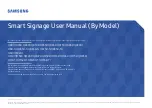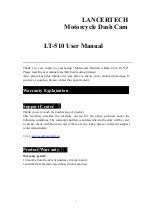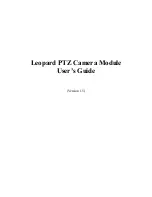
EPSON PhotoPC 3000Z
Revision A
Operating Principles
Circuit
45
2.2.2.3 LCD Block
During monitoring, YUV conversion is carried out for the 10-bit CCD data
which is input from the A/D conversion block to the ASIC and is then
transferred to the DRAM so that the CCD data can be displayed on the LCD.
The data which has accumulated in the DRAM is passed through the NTSC
encoder, and after D/A conversion is carried out to change the data into a Y/C
signal, the data is sent to the LCD panel and displayed.
If the shutter button is pressed in this condition, the 10-bit data which is
output from the A/D conversion block of the CCD is sent to the DRAM (DMA
transfer), and after processor, it is displayed on the LCD as a freeze-frame
image.
During playback, the JPEG image data which has accumulated in the flash
memory is converted to YUV signals, and then in the same way as during
monitoring, it is passed through the NTSC encoder, and after D/A conversion
is carried out to change the data into a Y/C signal, the data is sent to the LCD
panel and displayed.
The two analog signal (Y/C signals) from the ASIC are converted into RGB
signals by the LCD driver inside panel, and these RGB signals and the LCD
driver inside the panel are used to drive the LCD panel. The RGB signals are
1H transposed so that no DC component is present in the LCD element, and
the two horizontal shift register clocks drive the horizontal shift registers
inside the LCD panel so that the 1H transposed RGB signals are applied to the
LCD panel. Because the LCD closes more as the difference in potential
between the COM (common polar voltage: fixed at DC) and the R, G and B
signals becomes greater, the display becomes darker; if the difference in
potential is smaller, the element opens and the LCD become brighter.
2.2.2.4 Lens Drive Block
The figure below is the lens drive block diagram.
Figure 2-12. Lens Drive Circuit Block Diagram
Summary of Contents for PhotoPC 3000Z
Page 5: ...Revision Status Revision Date of Issue Description A April 20 2000 First Release ...
Page 8: ...C H A P T E R 1 PRODUCT DESCRIPTIONS ...
Page 35: ...C H A P T E R 2 OPERATINGPRINCIPLES ...
Page 53: ...C H A P T E R 3 TROUBLESHOOTING ...
Page 57: ...C H A P T E R 4 DISASSEMBLYANDASSEMBLY ...
Page 70: ...C H A P T E R 5 ADJUSTMENT ...
Page 88: ...C H A P T E R 6 MAINTENANCE ...
Page 90: ...C H A P T E R 7 APPENDIX ...
Page 92: ......
Page 94: ......
Page 95: ......
Page 97: ......
Page 98: ......
Page 99: ......
Page 100: ......
Page 101: ......
Page 102: ......
Page 103: ......
Page 104: ......
Page 109: ......
















































